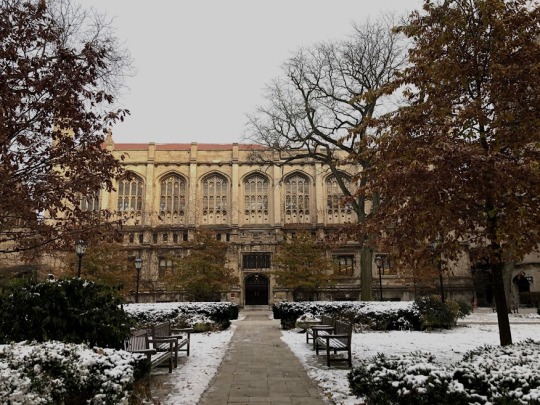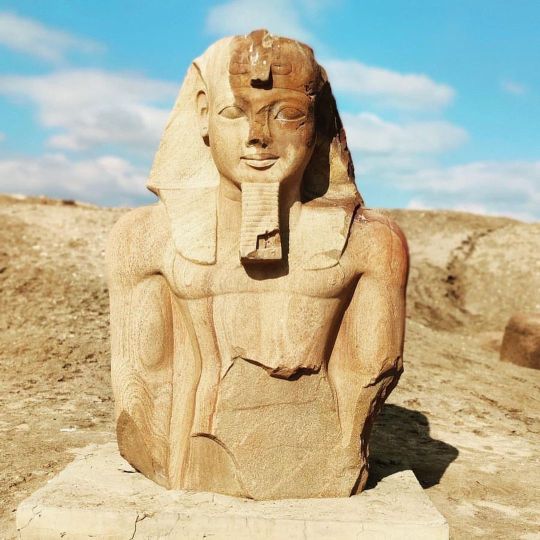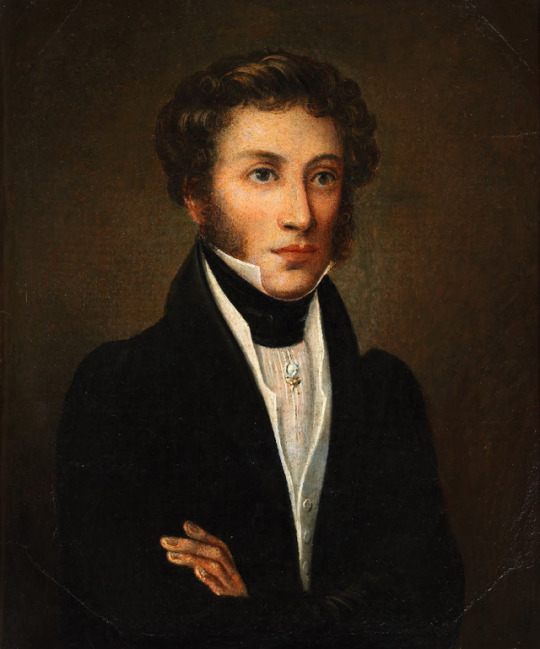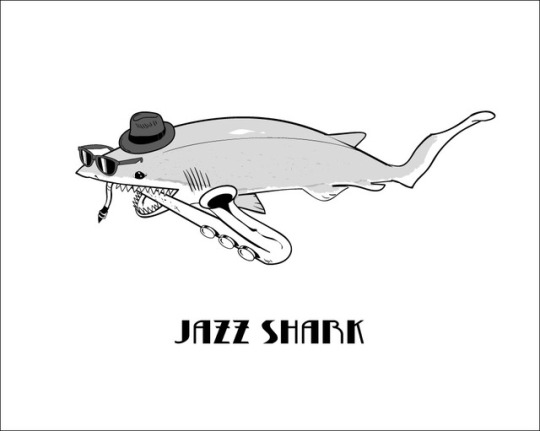#Wenamun
Text
It's not really a short term project or anything but I'm high key excited about my conceptual ancient Egyptian anthology. I'm shooting for four or five novelettes, some fantasy, some scifi, some closer to post-apocalyptic, but all of them set in alternative universe ancient Egypts and based on Egyptian literary works.
#i've got the secret name of re; the misadventures of wenamun + the shipwrecked sailor; and the contendings so far#i'm still thinking what myth might best fit the solarpunk egypt story & i also really want to do sth with discourse between man and his ba#and westcar my beloved#ok maybe it'll be 6 novelettes lmao
44 notes
·
View notes
Text
getting harder each day not to convince myself to write a fic in middle egyptian purely because of the misuse in its ao3 section
#hieroglyphs#only one fic listed under hieroglyphs is in and while im always happy to see someone try to learn a language they#completely misunderstood the system#like they're running it on vibes#determinatives only#they think it's logograms that you pick at will to metaphorically convey your message#i was awake at 2am correcting a couple lines and realised the whole thing was at that level of quality#yes that's misleading bc wenamun is recorded in hieratic not hieroglyphs but that's not a language i could write in with confidence#and wenamun cannot end with that cliffhanger#blethering
4 notes
·
View notes
Photo


Today I finished my Statement of Purposes (?) for the PhD programs I am applying to! That’s a big weight off my mind! I still need to do more Wenamun, catch up on readings and check out the research for my archaeology data class. If I can fit thesis research in, great, if not I won’t beat myself up over it. Also, I really like the people I’m seeing right now and I’m 2 months on T! Yay! Wishing you all happiness and productivity. (in that order)
1K notes
·
View notes
Photo

Photos by @elshamy4 from the city of Tanis/Djanet 𓆓𓂝𓈖𓏏𓊖 Tanis is unattested before the 19th Dynasty of Egypt - Beloved Land - Tameri 𓇾𓌸𓂋𓆵𓇋𓊖𓊖 “t3-mrı͗”, when it was the capital of the 14th nome 𓈮 “ḫnty-ı͗3b.ty” of Lower Egypt. A temple 𓉞𓉐 “ḥw.t” inscription datable to the reign of Ramesses II (𓇳𓏤𓄟𓋴𓇓) “rˁ-msı͗-sw” ‘Him, Born of Re’ mentions a "Field of Tanis", while the city 𓊖𓏏 “nı͗w.t” is securely attested in two 20th Dynasty documents: the Onomasticon of Amenope and the Story of Wenamun, as the home place of the pharaoh–to–be Smendes I (𓇋𓏠𓈖𓌸𓄓𓃝𓎟𓊽𓊽𓏏𓊖) “nı͗-sw-b3-n-ḏd.t mrı͗-ı͗mn” ‘He belongs to the ram, the lord of Mendes, beloved of Amun’. Tanis was known by many names 𓂋𓈖 “rn” in Ancient Egyptians 𓂋𓐝𓎀𓀂𓀭𓏪 “rmṯ” called it Djanet, and the Old Testament refers to the site as Zoan. Today it's called Sân el-Hagar. The site, in the Nile 𓎛𓂝𓊪𓏭𓈘𓈗 “ḥpy” Delta northeast of Cairo, was capital of the 21st and 22nd dynasties, during the reign of the Tanite kings in Egypt's Third Intermediate period. The treasures found in the "lost city" of Tanis rival those of King Tut's. Yet for more than six decades the riches from its rulers' tombs 𓂝𓂝𓇋𓉴 “ˁˁı͗” have remained largely unknown. #Egypt #egyptian #ancient #ancientegypt #hieroglyphics #ägypten #thisisegypt #egyptologist #myegypt #egyptianhistory #egyptology #archeology #hieroglyphs #madeinegypt #egypte #egyptians #egyptshots #loveegypt #discoveregypt #egitto #埃及 #مصر #egipto #tanis #smendes #niledelta #delta https://www.instagram.com/p/CJWVTLWrr2H/?igshid=hbvm4ppj1hj
#egypt#egyptian#ancient#ancientegypt#hieroglyphics#ägypten#thisisegypt#egyptologist#myegypt#egyptianhistory#egyptology#archeology#hieroglyphs#madeinegypt#egypte#egyptians#egyptshots#loveegypt#discoveregypt#egitto#埃及#مصر#egipto#tanis#smendes#niledelta#delta
16 notes
·
View notes
Text
S. Moore’s History of the Novel: Egyptian Lit
From the 12th Dynasty, 1990 to 1800 BCE:
“The Tale of Sinuhe”:
Sinuhe’s panic attack, which is never really explained and which he blames on some god, feels very modern in its ambiguity.
“The Tale of the Eloquent Peasant”:
Here, a landowner named Nemtinakht swindles a peasant named Khunanup, who complains to Rensi, the high steward. The latter is so surprised and impressed by the peasant’s elaborate, metaphoric complain that he tells the king of it, who orders Rensi to keep the peasant coming back and to write down what he says for the king’s entertainment.
“The Tale of the Shipwrecked Sailor”:
This is the earliest example of a frame-tale, which embeds further tales within a unifying structure, like The Arabian Nights, and in fact this tale reads like one of Sinbad’s adventures.
The Tale of King Cheops’ Court:
Interesting is the equation of writers with magicians, literary creation with a conjuring act: Djadja-em-ankh is both “the scribe of books” and an enchanter with miraculous powers.
*
From the Ramesside Period, 1292 to 1070 BCE:
“The Tale of Two Brothers”:
One day, Anubis’s wife makes a pass at Bata but is rebuffed. As in the later Hebrew story of Joseph and Potiphar’s wife, the scorned woman tells her husband that Bata tried to assault her. Anubis then hides himself behind the stable door to kill him brother when he returns from the fields, but a talking cow warns Bata of Anubis’s plan... To demonstrate his innocence, Bata cuts off his phallus and throws it into the water (where a catfish swallows it), which convinces his brother that his wife lied to him.
“The Report of Wenamun” (quoting Lichtheim):
The Late Egyptian vernacular is handled with great subtlety. verbal duels between Wenamun and the prince of Byblos, with their changes of mood and shades of meaning that include irony, represent Egyptian thought and style at their most advanced.
Quoting Herodotus’s Histories, which reported on one of the stories from the Egyptian Story of Petese:
[The King] was blind for ten years, and in the eleventh he received an oracle from the city of Buto to the effect that, the time of his punishment now being ended, he would recover his sight if he washed his eyes with the urine of a woman who had never lain with any man except her husband. He tried his wife first, but without success; then he tried other women, a great many, one after another, until at last his sight was restored. Then he collected within the walls of a town, now called Red Clod, all the woman except the one whose urine had proved efficacious, set the place on fire, and burnt them to death, town and all; afterwards he married the woman who had been the means of curing him.
Quoting the Marquis de Sade:
Let there be no doubt about it: it was in the countries which first recognized gods that the novel originated; and to be more specific, in Egypt, the cradle of all divine worship. No sooner did man begin to suspect the existence of immortal beings than he endowed them with both actions and words. Thereafter we find metamorphoses, fables, parables, and novels: in a word, we find works of fiction as soon as fiction seized hold of the minds of men.
3 notes
·
View notes
Photo

THE REPORT OF WENAMUN: TEXT & COMMENTARY:
THE literature of the Middle Kingdom of Egypt (2040-1782 BCE) is justly famous as some of the best the culture ever produced. Great works like The Tale of the Shipwrecked Sailor and The Tale of Sinuhe stand among the great literary masterpieces of the world and there is no doubt that the literary arts in Egypt reached a high point during the Middle Kingdom. There are other works, however, often overlooked from before and after this period. The didactic literature of the Old Kingdom (c. 2613-2181 BCE) and the love poems and other works from the New Kingdom (c. 1570 - c. 1069 BCE) are often of equal merit.
Among the later works is a piece known as The Report of Wenamun (also The Tale of Wenamun), which was long regarded as an official account of an actual voyage but now is recognized as a literary work of impressive achievement. Wenamun dates from c. 1090-1075 BCE in the latter part of the New Kingdom after the golden days of the empire were in the past and Egypt had lost its international prestige. It is a first-person narration of a journey from Egypt to the Levant to get wood for the ship of the god Amun and the many difficulties the narrator experiences along the way; difficulties he feels he would not have known in the days of empire.
Read More
120 notes
·
View notes
Text
if i do say so myself it's still funny that in my future ancient egypt short where egypt spans the entire world, the sea peoples are the dutch, the english, the french and the spanish.
#the story as it currently is (for the tales of the white heart-esque multiverse anthology that came out recently) is ok but like#the rights are still mine so i'm gonna nuke the multiverse bar concept and turn it into a novelette retelling#of shipwrecked sailor and the misadventures of wenamun with a bit of discourse between man and his ba thrown in#and it's going to be great instead
31 notes
·
View notes
Photo

The State A.S.Pushkin Museum – today one of the cultural centers of Moscow and Russia. In addition to the head of the museum comprises five branches: Memorial flat A.S Pushkin on Arbat Street, Memorial Apartment of Andrei Bely on Arbat Street, the Museum of I.S Turgenev on Ostozhenka, House Museum V.L Pushkin on Old Basman St. and Showrooms in monetary alley. The main museum complex is located in a wonderful landmark beginning of the XIX century – the urban gentry manor Khrushchev-Seleznev on the street. Prechistenka, 12.2.
The Pushkin State Museum of Fine Arts (Russian: Музей изобразительных искусств им. А.С. Пушкина, also known as ГМИИ) is the largest museum of European art in Moscow, located in Volkhonka street, just opposite the Cathedral of Christ the Saviour. The International musical festival Svyatoslav Richter’s December nights has been held in the Pushkin museum since 1981.
Fine Art Collection
Tsvetaev’s dream was realised in May 1912, when the museum opened its doors to the public. The museum was originally named after Alexander III, although the government provided only 200,000 rubles toward its construction, in comparison with over 2 million from Nechaev-Maltsev. Its first exhibits were copies of ancient statuary, thought indispensable for the education of art students. The only genuinely ancient items – Moscow Mathematical Papyrus and Story of Wenamun – had been contributed by Vladimir Golenishchev three years earlier.
var quads_screen_width = document.body.clientWidth; if ( quads_screen_width >= 1140 ) { /* desktop monitors */ document.write('<ins class="adsbygoogle" style="display:inline-block;width:468px;height:60px;" data-ad-client="pub-9117077712236756" data-ad-slot="9839843423" >'); (adsbygoogle = window.adsbygoogle || []).push({}); }if ( quads_screen_width >= 1024 && quads_screen_width < 1140 ) { /* tablet landscape */ document.write('<ins class="adsbygoogle" style="display:inline-block;width:468px;height:60px;" data-ad-client="pub-9117077712236756" data-ad-slot="9839843423" >'); (adsbygoogle = window.adsbygoogle || []).push({}); }if ( quads_screen_width >= 768 && quads_screen_width < 1024 ) { /* tablet portrait */ document.write('<ins class="adsbygoogle" style="display:inline-block;width:468px;height:60px;" data-ad-client="pub-9117077712236756" data-ad-slot="9839843423" >'); (adsbygoogle = window.adsbygoogle || []).push({}); }if ( quads_screen_width < 768 ) { /* phone */ document.write('<ins class="adsbygoogle" style="display:inline-block;width:468px;height:60px;" data-ad-client="pub-9117077712236756" data-ad-slot="9839843423" >'); (adsbygoogle = window.adsbygoogle || []).push({}); }
After the Russian capital was moved to Moscow in 1918, the Soviet government decided to transfer thousands of works from St Petersburg’s Hermitage Museum to the new capital. The entire collection of Western art from the Museum Roumjantsev was added too. These paintings formed a nucleus of the Pushkin museum’s collections of Western art. But the most important paintings were added later from the State Museum of New Western Art. These comprised Impressionist and Post-Impressionist artwork, including top works by Van Gogh, Gauguin, Picasso, Dufrénoy, Derain and Matisse. Among them, Van Gogh’s “La Vigne Rouge”, apparently the only painting sold during the artist’s lifetime. In 1937, Pushkin’s name was appended to the museum, because the Soviet Union marked the centenary of the poet’s death that year.
Archaeological Collection
After World War II the evacuated Dresden Gallery had been stored in Moscow for 10 years. The Dresden collection was finally returned to German Democratic Republic, despite strong opposition from the museum officials, notably Irina Antonova, who had been running the museum since February 1961. The Pushkin Museum is still a main depositary of Troy’s the so-called Priam’s Treasure gold hoard removed from Troy by the German archaeologist, Heinrich Schliemann and later taken by the Soviet Army (Red Army) from the Pergamon Museum in Berlin;[7] as well as other artifacts taken from Germany during the Soviet occupation at the end of the Second World War, for example the Eberswalde Hoard.
Numismatic Collection
The Pushkin Museum has a numismatic collection which is unpublished. It includes archaeological material from Central Asia, such as a hoard of Kushano-Sasanian coins acquired in 2002
The State A.S.Pushkin Museum Moskva, Russia was originally published on HiSoUR Art Collection
0 notes
Video
youtube
A stick figure animation of the ancient Egyptian tale "The Report of Wenamun". Animation by me and backgrounds by my friend.
#The Report of Wenamun#Wenamun#ancient Egypt#Egypt#ancient Egyptian literature#animation and all figures by me#I had a few late nights to get this for Monday
2 notes
·
View notes
Photo


I am getting stuff done this weekend! I am going to work on stuff for my PhD application including: writing my personal statement and composing emails to potential PhD advisors. I am also going to start my annotated bib for my thesis. For my archeological datasets class, I’m going to do some research so I can discuss my final project idea with the professor on Monday. I will also catch up on Egyptian history readings and start translating “The Misfortunes of Wenamun” for Late Egyptian. It’s going to be busy, but I can do it!!! Wishing you all a fun and productive weekend!
32 notes
·
View notes
Text
Starting to dig this thing again though. Not to toot my own horn but I managed to make it a mix of The Misadventures of Wenamun and Discourse Between a Man and His Ba, which pulls themes from both didactic literature like The Prophecy of Neferti as well as other prose tales like The Shipwrecked Sailor, while at the same time slightly subverting the motif of acting in accordance to ma'at, but it is NOT a work of historical fiction.
And it has a pirate.
So.
Yeah.
20 notes
·
View notes
Text
Still in hyperfocus mode so are we making a list of running projects that aren't the Egypt novel? Yes yes we are
Anthology short (SF retelling of The Misadventures of Wenamun with a side of futuristic pirate king and transdimensional time travel)
Mini guest short for Titus Lunter's Wizard Immortal (theme "space witch")
Egypt fantasy short (magic! dumb bitch protagonist! angry priests!)
Egyptian histfic short (a strict general under Amenhotep III may or may not be what we now call autistic (j/k he totally is))
Children's book about Prince Thutmose and his cat (with guest appearances by Bastet and Sekhmet)
Accidental book (SF meets ancient Egypt with queer protags, a nanny-cum-general and a goddess of vengeance in the flesh)
??? More Egypt stuff probably
23 notes
·
View notes
Text
For the first time in my life I actually wrote out an outline for a short story before I started writing and it feels solid. Now we’ll see if I can actually keep myself to the outline or if the story wants to be something else, but so far it feels true to who the characters are and the journey they’re undertaking, while still being my desired retelling of The Misadventures of Wenamun. So... Perhaps?
#in which sonja gets way more professional about her writing process lmao#i can't do outlines for larger novels (generally I plan roughly five chapters ahead while keeping the stakes in mind)#but perhaps it will work for short stories#if I think about why Diastole worked it's because I had the whole thing mapped in my head prior to writing#I can't do that right now bc exhaustion but hey then we'll just physically write it out
17 notes
·
View notes
Text
Project 1: The Egypt novel
Project 2: Fantasy Egypt novel(la)
Project 3: The accidental Fantasy-Egypt-meets-SF book
Project 4: SF retelling of The Report of Wenamun
My husband: ...When are you going to write something other than Egypt
Me: Excuse me go wash your mouth with soap
30 notes
·
View notes
Text
god I FINALLY know what I want to say with the short for the anthology. Only took me seven fucking months.
It's still mostly a SF retelling of the Misadventures of Wenamun, but I'm going to work with the value of different perspectives and identity, which plays into the whole multidimensionality thing.
Also multidimensional time travel. Roofshipdeck-hopping. A dying god-king. One or more dimensions at stake. And an annoying thief who may or may not be D.
#why yes i AM putting my as of yet unpubbed main character into a short that I know is going to get pubbed#it's called seeding and is hilarious
15 notes
·
View notes
